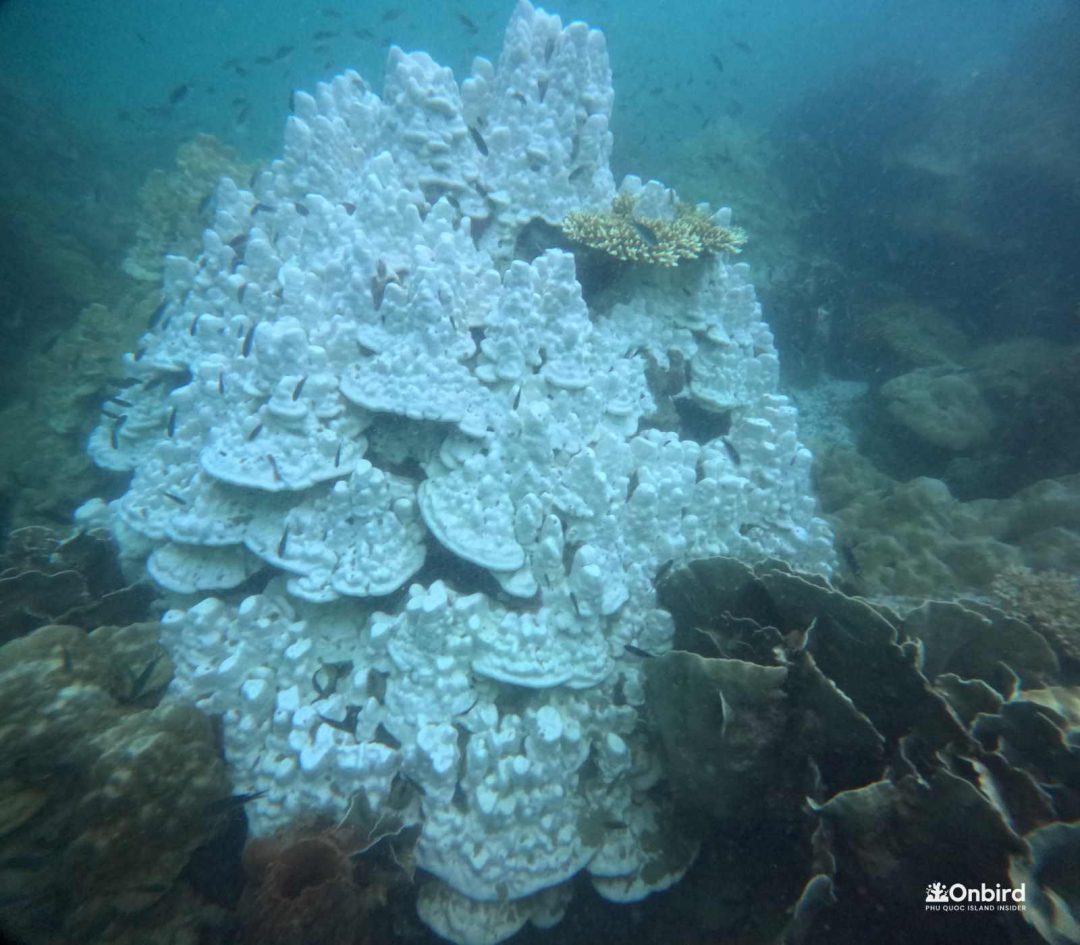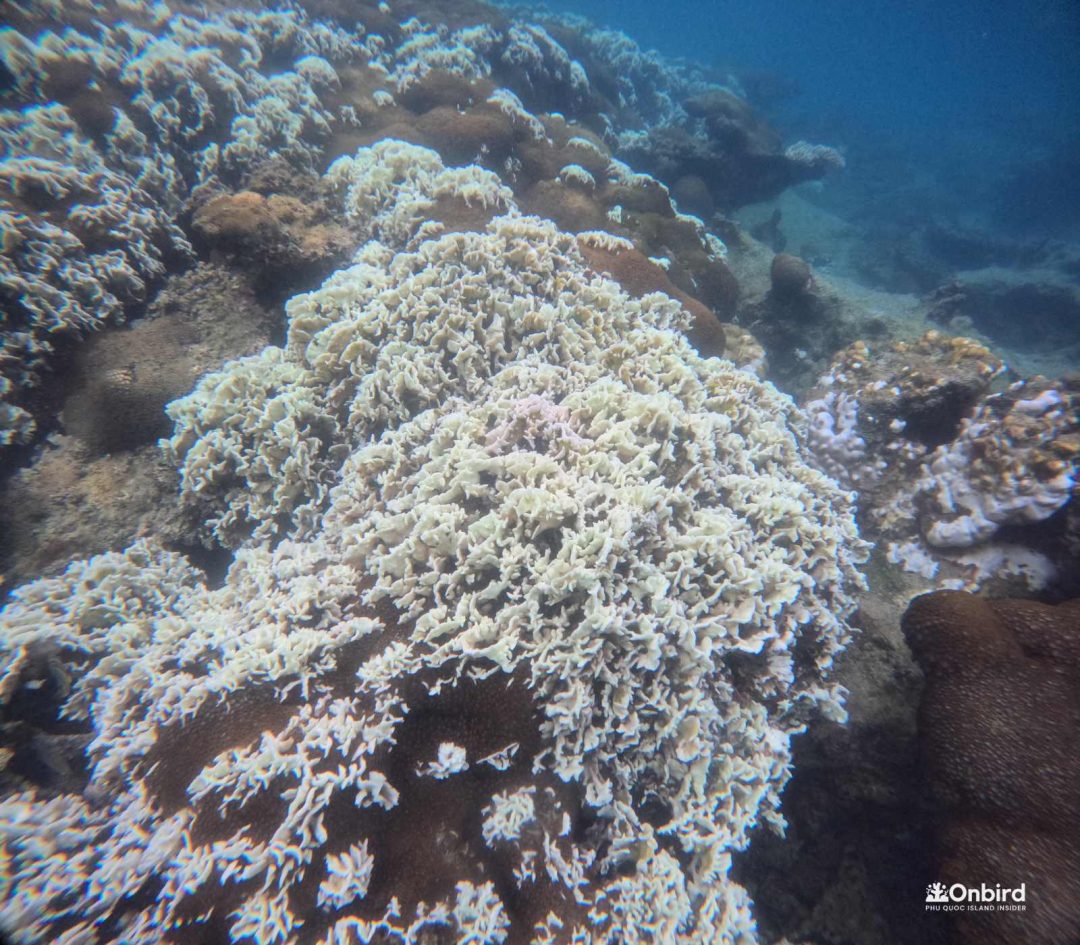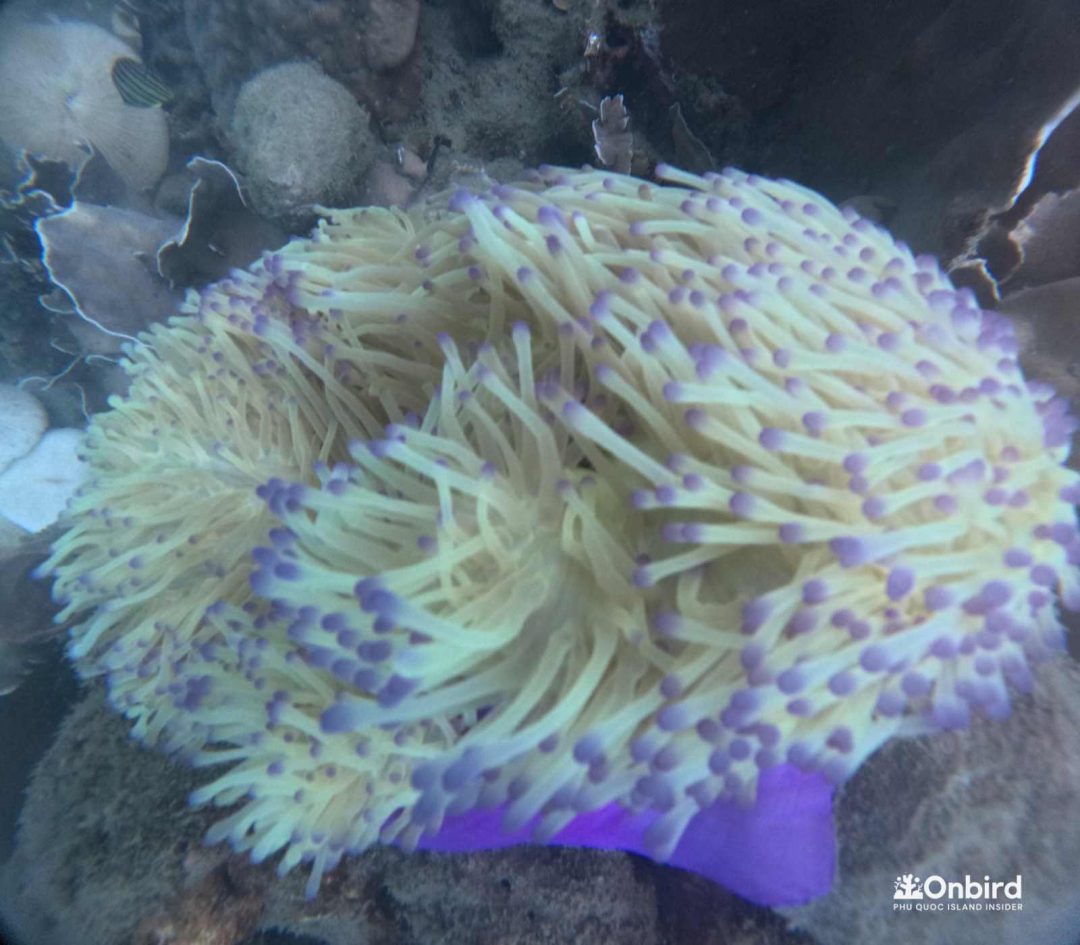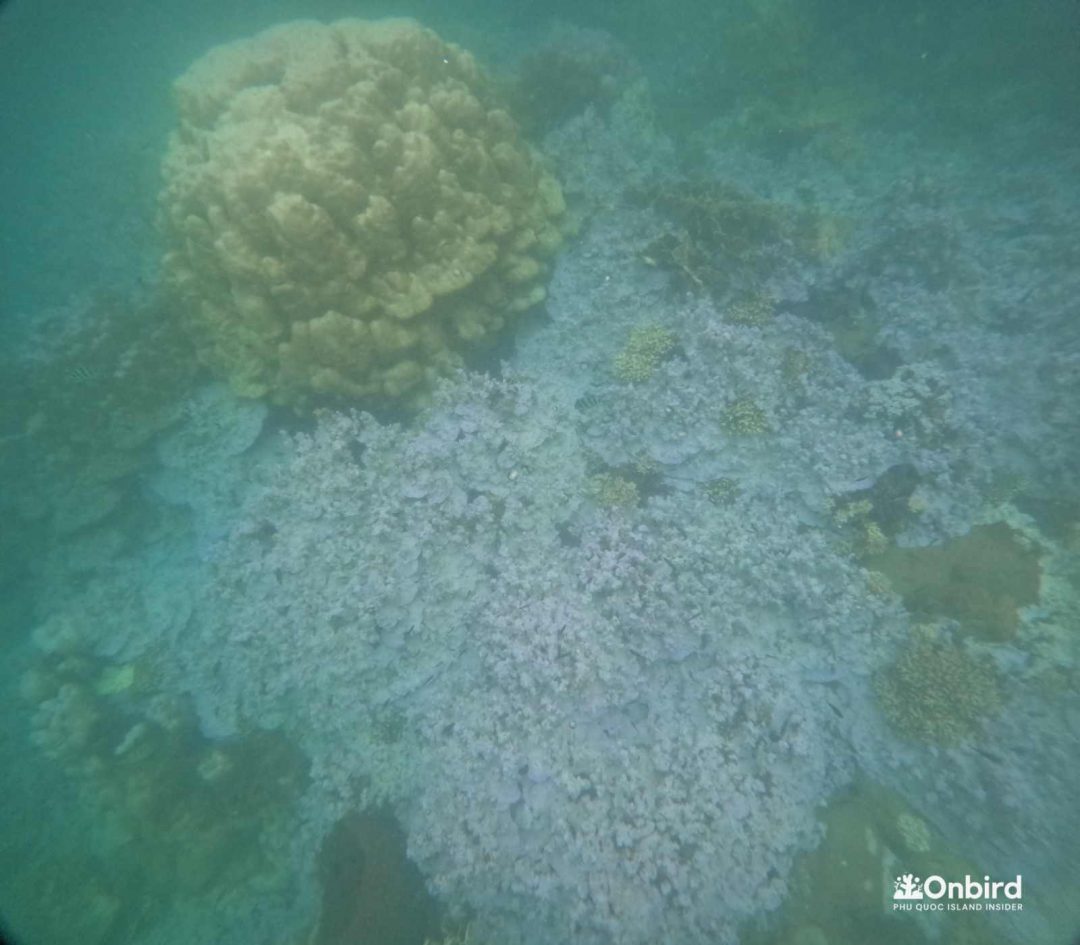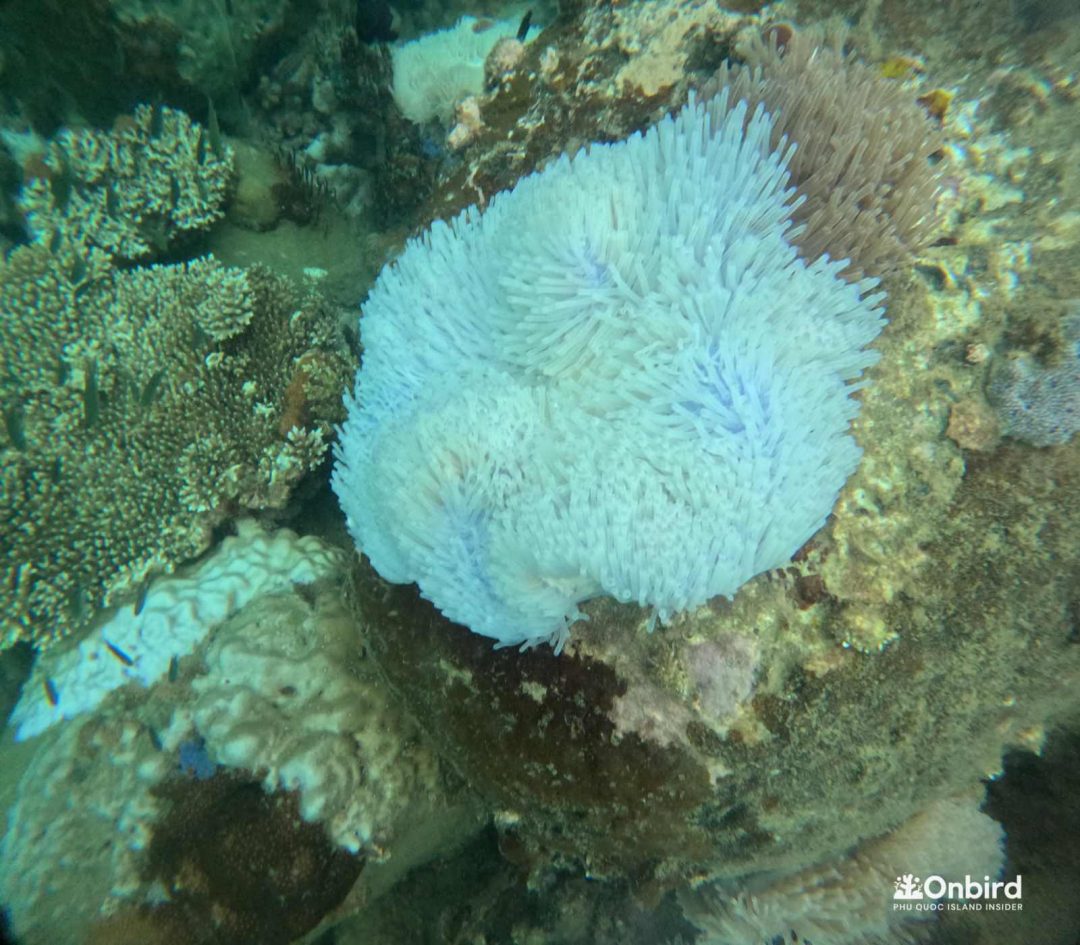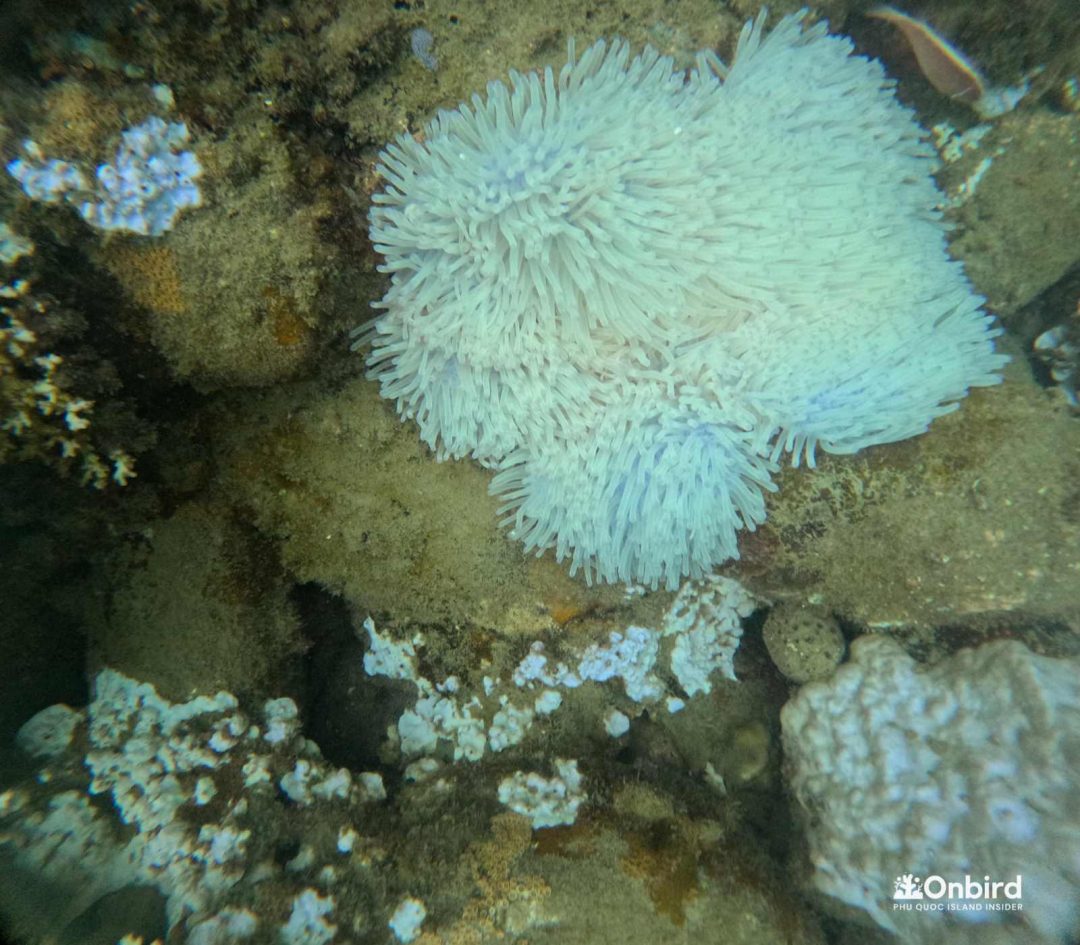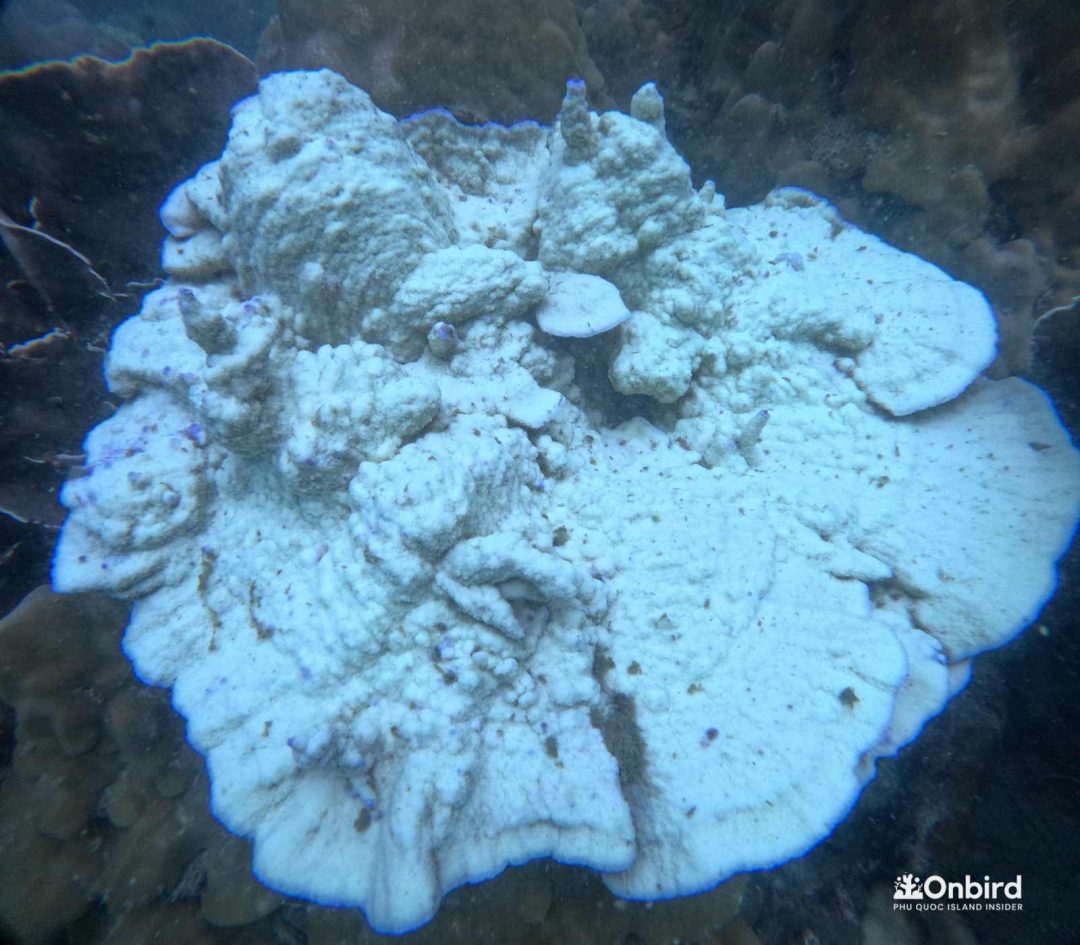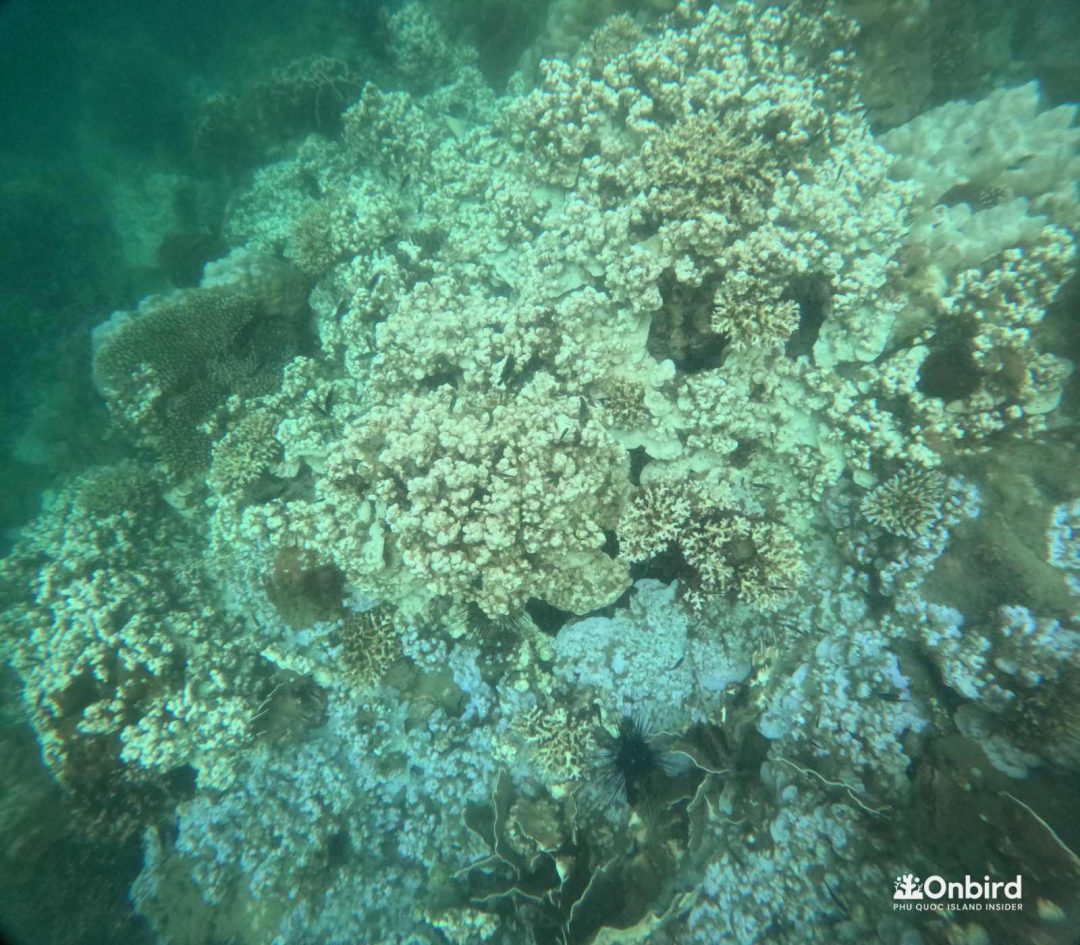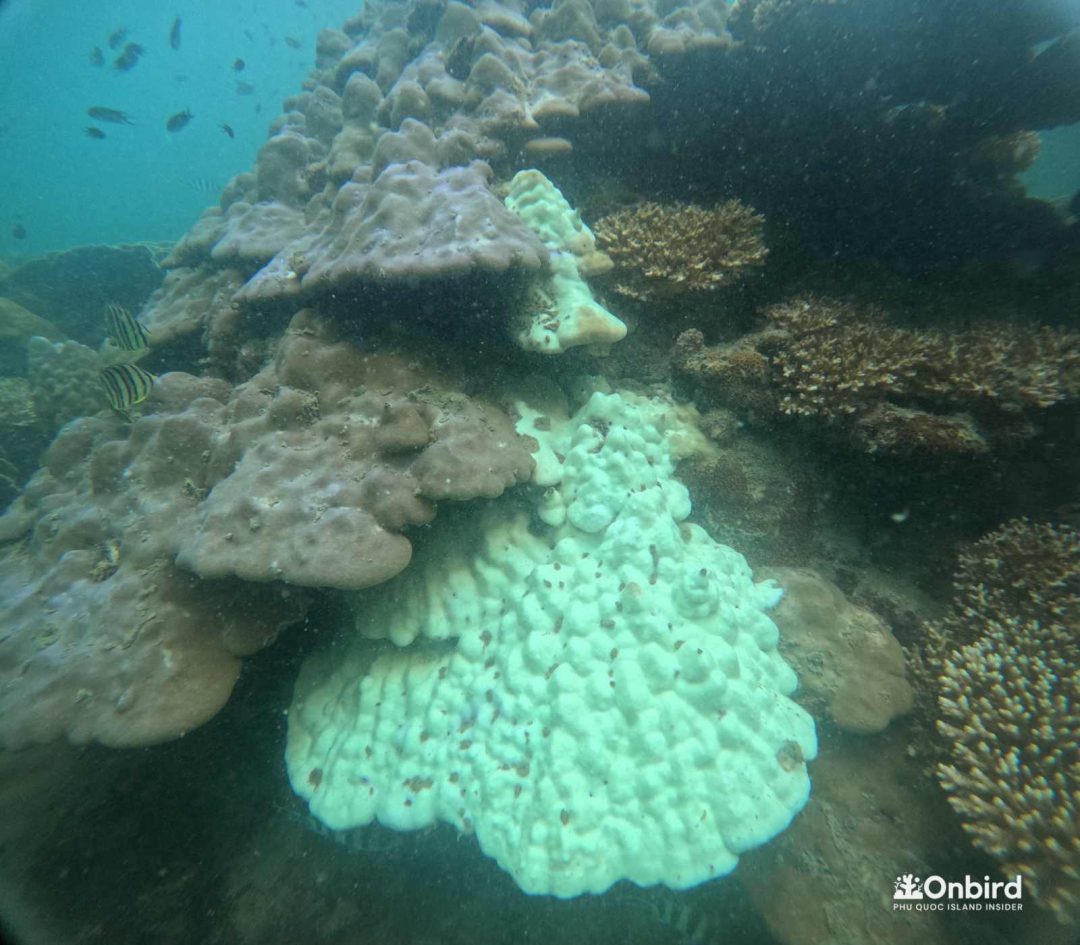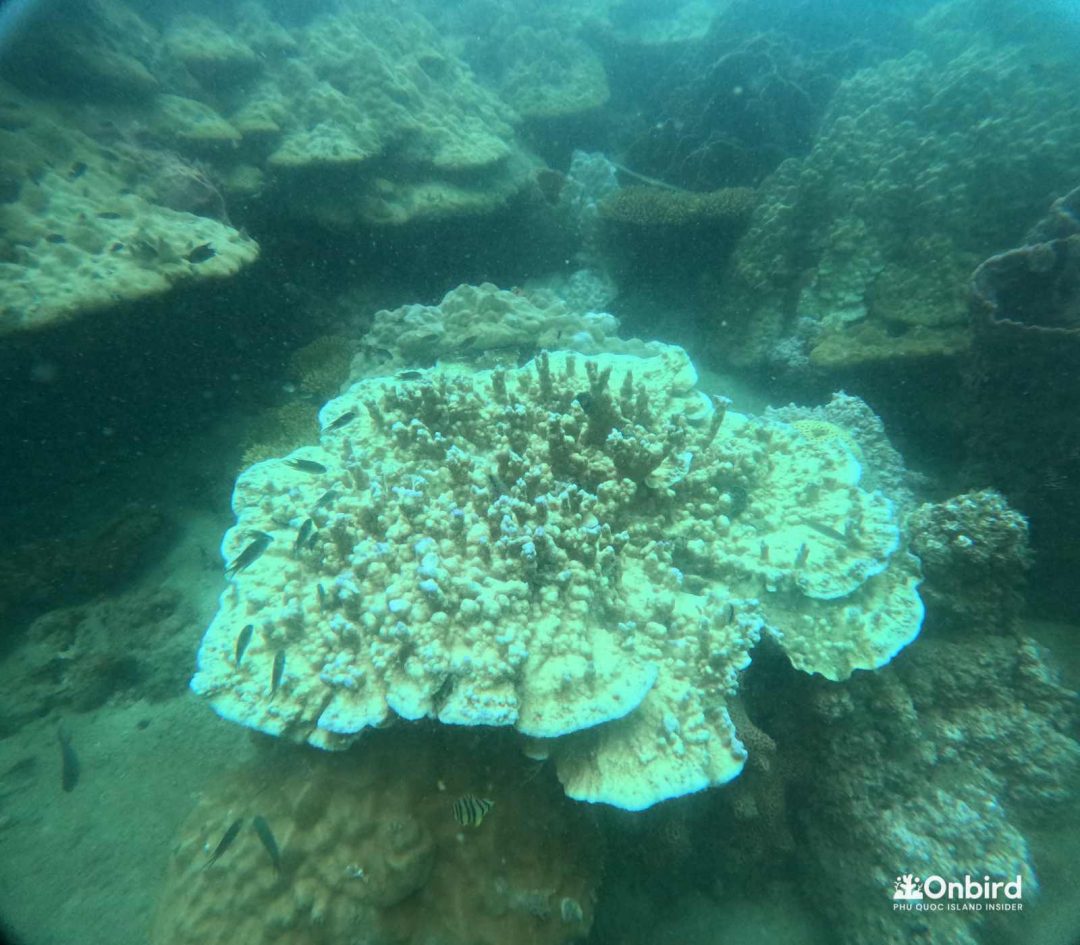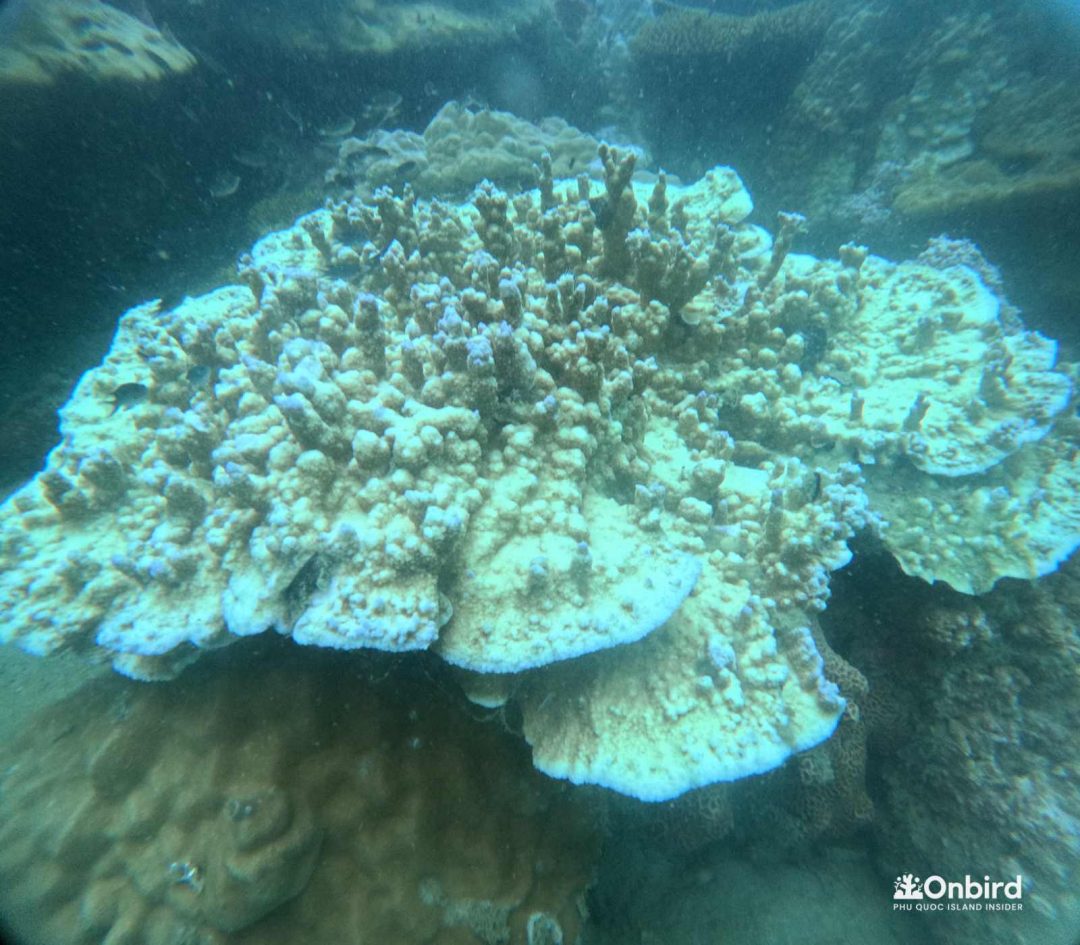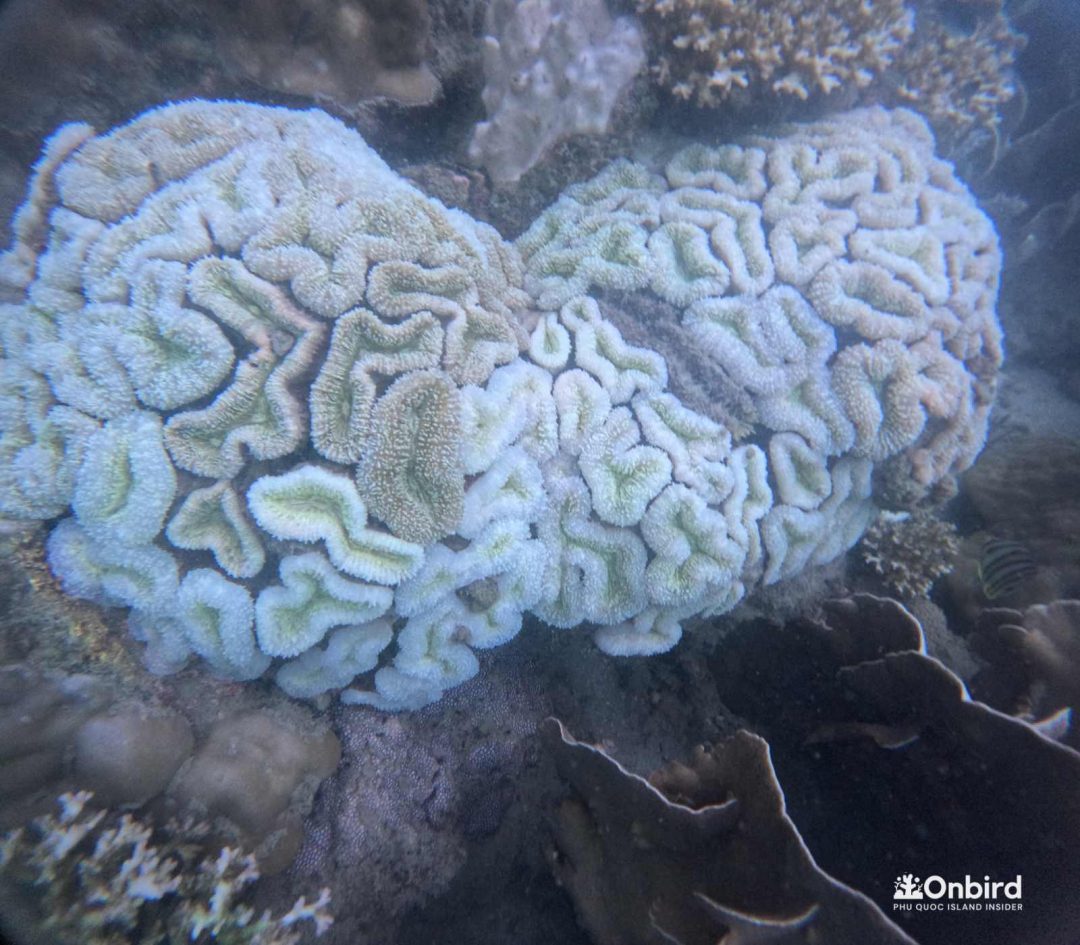During the peak hot period of April and early May 2024, OnBird’s observation detected a large-scale coral bleaching event occurring in Phu Quoc.
The mass coral bleaching event, the second in the past decade, comes amid relentlessly rising global sea temperatures. The National Oceanic and Atmospheric Administration (NOAA) and the International Coral Reef Initiative’s (ICRI) global network of coral reef scientists have announced that the world is currently experiencing its fourth global coral bleaching event, the second in the last 10 years.
This year, under the influence of El Niño, temperatures have peaked, with water temperatures consistently measured at around 32°C at depths of 1-2 meters, far exceeding the current adaptive temperature range of corals, which is 23-29°C in Phu Quoc waters. Currently, the OnBird team continues to collect data and images through underwater surveys to provide a more comprehensive view of this event in the early summer months: April and May in Phu Quoc
As of the May 15th update, numerous bleached or undergoing bleaching states were recorded in many coral colonies, including Porite Lueta corals and Broccoli corals.
Based on our historical data over ten years, the warmest water on this day in Phu Quoc was recorded in 2016 and was 31.8°C, it was a serious bleaching event, OnBird believes that this coral bleaching event will have more severe consequences than previous ones. This is because the coral reefs in Phu Quoc are already in a state of degradation due to natural and human impacts, including tourism activities and fishing, consuming important seafood species such as dotted grouper, sentinel crab, sea urchins, squid eggs, and small fish. This has severely weakened the reef’s ability to recover after bleaching events.
Recalling the 2008 bleaching event, which within nearly two months led to the near disappearance of the entire coral reef at Hon Roi.
MAIN CONTENTS
What Is Coral Bleaching?
The phenomenon of coral bleaching occurs when the symbiotic algae (zooxanthellae) are expelled from the coral due to stress from sudden changes in temperature (recently, heat). The coral releases chemical compounds that are uncomfortable for the symbiotic algae, causing them to detach from the coral, resulting in bleaching. The coral may appear white or display some other faded colors, but upon closer inspection, the coral polyps’ tentacles are not visible as fine hair-like structures.
Symbiotic algae (zooxanthellae) are the primary producers of 70-80% of the coral’s nutrients and also form a protective layer around coral cells, shielding them from the sun’s harmful rays.
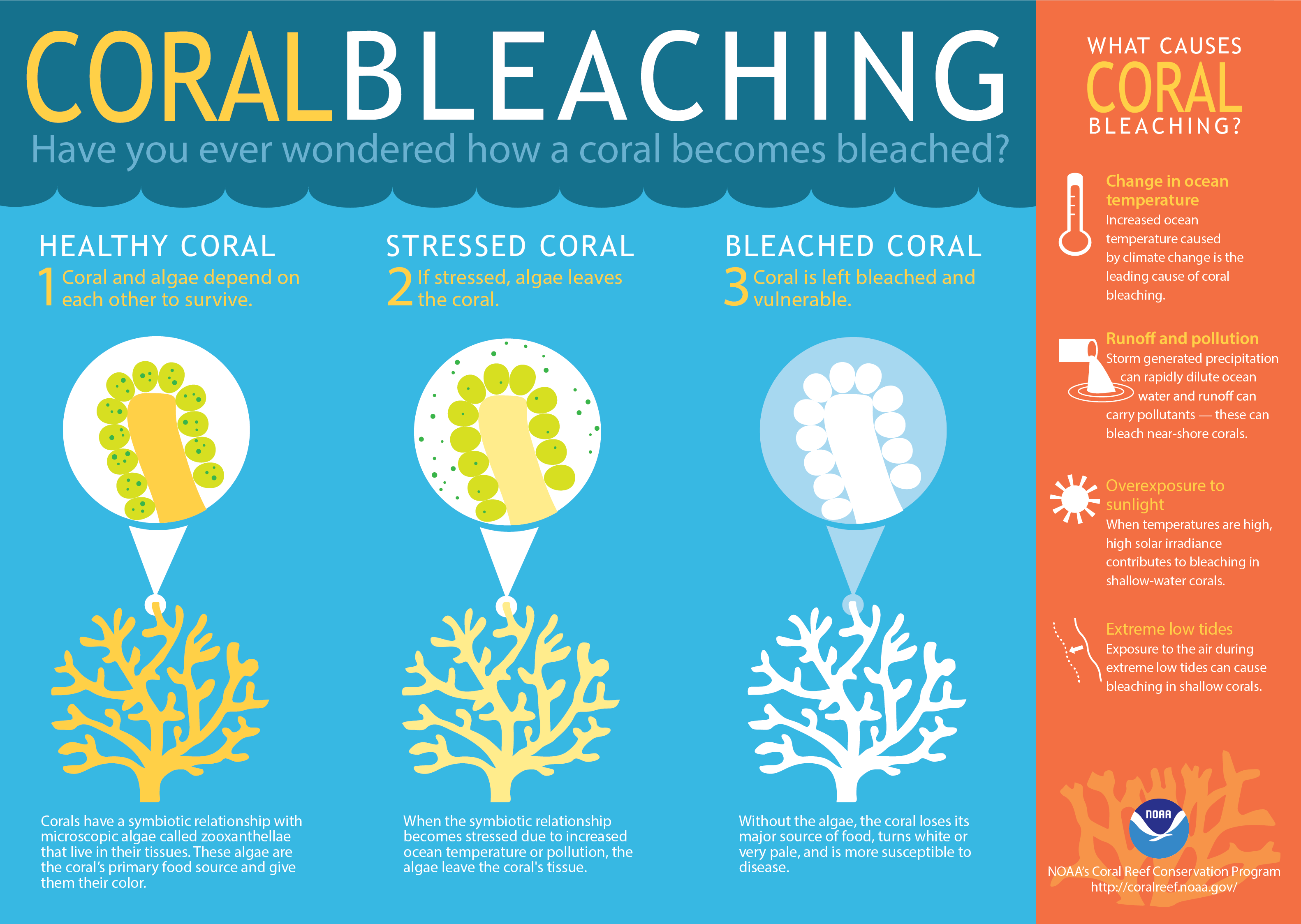
The phenomenon of coral bleaching occurs when the symbiotic algae (zooxanthellae) are expelled from the coral due to stress from sudden changes in temperature (recently, heat). The coral releases chemical compounds that are uncomfortable for the symbiotic algae, causing them to detach from the coral, resulting in bleaching. The coral may appear white or display some other faded colors, but upon closer inspection, the coral polyps’ tentacles are not visible as fine hair-like structures.
Symbiotic algae (zooxanthellae) are the primary producers of 70-80% of the coral’s nutrients and also form a protective layer around coral cells, shielding them from the sun’s harmful rays.
Is Coral Bleaching Equivalent to Death?
The coral bleaching has not immediately killed the coral (as determined to be death when the coral is covered in black algae). At this point, the coral has a period of nearly a month to recover if the water temperature returns to normal conditions. During this time, the coral stops producing chemical substances that trigger reactions with symbiotic zooxanthellae algae, so the algae in the water will settle back onto the coral.
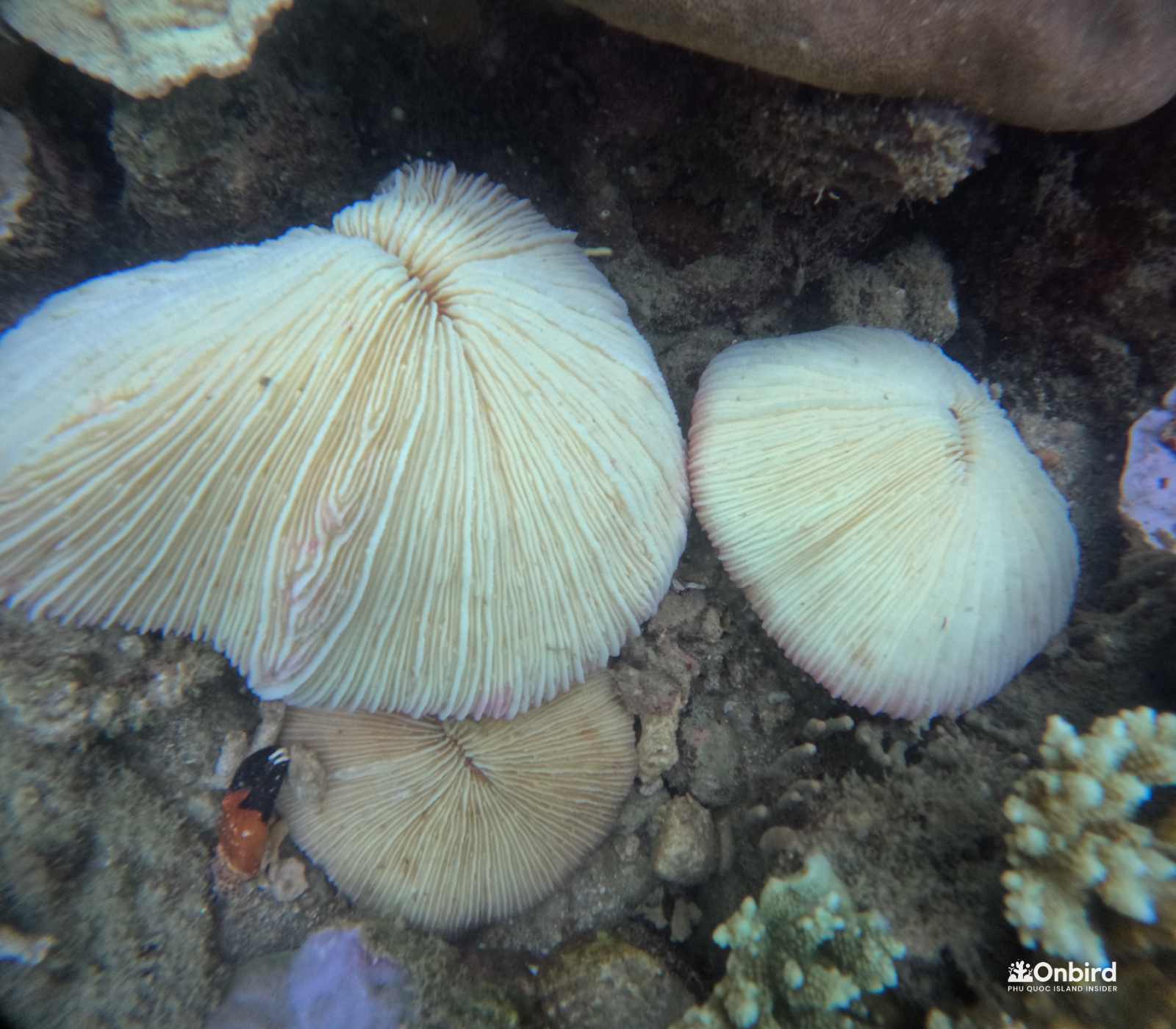
This bleaching phase is one of the most delicate stages for coral, and it’s prone to death because it has lost 70-80% of the nutrient source provided by symbiotic zooxanthellae algae. Only 20-30% remains, which the coral captures through its polyps at night. Due to the significant nutrient depletion and the loss of protective shielding from sunlight and UV rays during the day provided by zooxanthellae algae, the coral becomes weakened and susceptible to cell damage from UV radiation.
Sea anemones primarily rely on catching small fish and plankton for nutrition, unlike hard corals. Even if bleached, they can recover better than hard corals, but post-recovery, they may shrink to about a quarter of their original size due to malnutrition. The image below shows some bleached anemones in May 2024 at certain coral reefs in the south of Phu Quoc island.
Can Coral Survive After Bleaching Events?
Some coral species will die completely if the bleaching event occurs continuously for 10 days. Some species with better tolerance, such as Porites lutea coral, can withstand bleaching for several weeks to months and then recover slowly. According to observations by OnBird, for coral to recover well from bleaching, it depends on the combination of the following four factors:
- Improvement of water conditions or water temperature returning to normal levels.
- Abundance of algae-eating organisms in the reef ecosystem, such as sea urchins, parrotfish, crabs, and coral reef fish. These organisms control the algae population on coral reefs, preventing algae overgrowth and recycling the nutrients that they consume on coral reefs, then dispersing the symbiotic algae throughout the coral reef, helping to replenish the zooxanthellae for both new coral larvae and coral reefs that are lacking.
- Recovery due to the remaining amount of zooxanthellae algae on the coral, helping them to generate more zooxanthellae, regain color, and restore 70-80% of the nutrient source for the coral.
- Bleaching events do not occur repeatedly at high frequencies. Coral reefs after bleaching are weakened in immune capacity, susceptible to diseases, so they only recover to some extent and require a long time under favourable conditions to fully recover.
Therefore, for coral to recover from bleaching, it needs a healthy ecosystem, and robust microbial communities around them to help them withstand the heat waves causing major bleaching events.
What are the Impacts of Coral Death on Humans?
Though they occupy a small fraction beneath the ocean’s surface, coral reefs are regarded as habitats, breeding grounds, and nurseries for the larvae of numerous marine species, not only from coastal areas but also seasonally from offshore. Coral reefs are home to about 25% of all marine life, including over 4,000 species of fish, and around 70% of coral reef fish species prefer the scent of live coral. Without coral reefs, these fish species cannot survive against predators due to the loss of shelter for their offspring, gradually leading to an imbalance in marine ecosystems and disrupting the global food chain, also known as the trophic cascade, directly impacting humans.
What Can Tourists Do to Contribute to Coral Reef Protection in Marine Areas?
The degradation of coral reefs is occurring at a rapid pace and on a larger scale worldwide and in Vietnam, including Phu Quoc. Additionally, the depletion of seafood resources in the waters around Phu Quoc has led to a critical situation, causing the natural recycling mechanism of coral reefs to decline. Therefore, as a tourist, if you recognize your responsibility towards the environment and ecosystems and aim to change your behavior towards more sustainable tourism practices, you can consider the following points:
- Do not use chemical sunscreen containing ingredients such as Oxybenzone; therefore, prepare long-sleeved UV-resistant swimwear and avoid harmful organisms like jellyfish.
- Do not consume seafood with eggs: egg-bearing crabs, or squid with eggs.
- Do not consume certain species in coral reefs: Tridacna clams and giant clams.
- Do not consume species that eat or control algae in coral reefs: Sea turtles, and sea urchins (also known as sea hedgehogs), bailer shell.
- Do not charter local boat tours without knowledge of coral reefs and water conditions.
- Do not participate in environmentally destructive activities such as recreational fishing (local reel fishing), local tours with organizations of hunting sea urchins, parrotfish reef fish or spearfishing.
- Do not wear aqua shoes while in the coral reef area, and do not stand, touch, or kick any objects within the coral reef.



 日本語
日本語 中文
中文 한국어
한국어 Tiếng Việt
Tiếng Việt